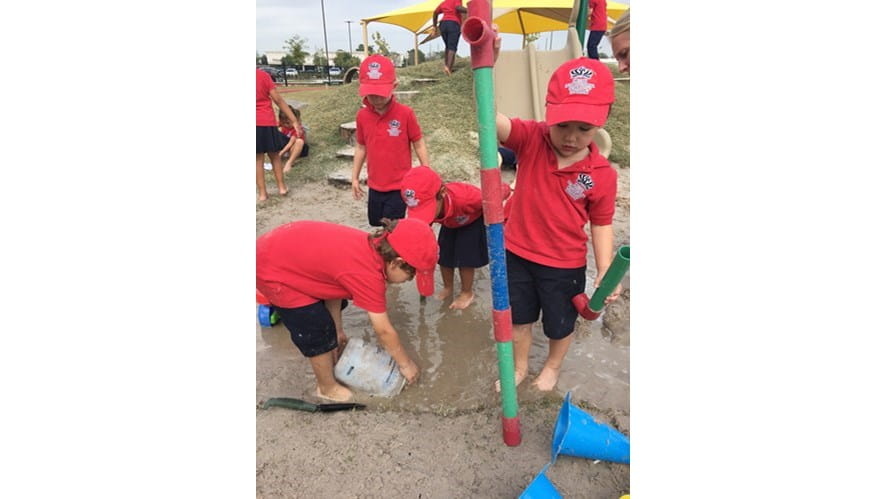One of my favourite moments this week was watching nearly all of the children totally engaged in playing in the sand pit which was a wonderful combination of water and wet sand.

One of my favourite moments this week was watching nearly all of the children totally engaged in playing in the sand pit which was a wonderful combination of water and wet sand.
One of my favourite moments this week was watching nearly all of the children totally engaged in playing in the sand pit which was a wonderful combination of water and wet sand.
Sand and water hold a tremendous attraction for young children, which was so clear by the expressions of concentration, wondering and pure joy shown on their faces. Here is a small snap shot of a conversation we over heard…
You have to dig it all the way across round here.
You have to have a spade to go all the way there.
(pointing to dry sand in the middle of dug part): Well there’s a little island there.
Look I can jump across.
Let’s make this channel deeper. Let’s dig more.
(standing in middle of water): Look its so deep. I can’t see my feet.
Look I’m sinking.
If you dig there we can join up these channels.
You make a dam there to stop the water.
I observed Ms Dickson sensitively offer the children new vocabulary to help them to describe what they could observe in the sand. Ms Dickson was able to listen to the children with an open mind and delicately join in the play, gently offering suggestions and encouraging the children to problem solve. This was a beautiful interaction.
We know that young children are active learners. Jean Piaget, a Swiss developmental psychologist, held that children draw on direct physical and social experiences as well as culturally transmitted knowledge to construct their own understandings of the world around them. Children start life taking in information through all their senses. Children naturally love playing with sand and we can capitalise on this natural affinity by offering the children opportunities to investigate it. Due to it’s sensory nature, sand play is an excellent medium for exploration and discovery.
The beauty of sand is that it truly allows children to explore their imaginations, it’s a material found almost everywhere on earth, and children love playing in it.
They can dig to Australia, find “fossils,” hunt for treasure, make roadways, build mountains, create waterways, build sand castles, dig tunnels, and discover hidden treasures. If they mix sand with water, they can make shapes of almost any kind.
There are so many things the children can learn on their own by playing in a pile of sand!
Our intention is to offer an outdoor classrooms that can challenge and inspire children while teaching them lessons about themselves and about nature.
I wonder what you would have been curious about if you were exploring the sand?
- Clair Wain, Director of Early Years